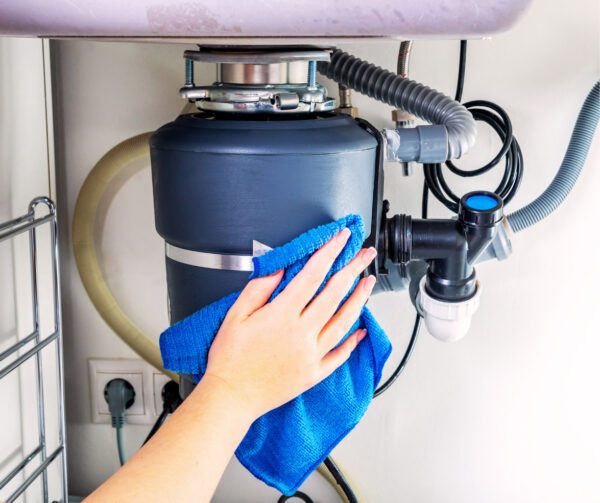Switching to a tankless water heater system is becoming increasingly popular among homeowners. The energy, space, and efficiency benefits that come with going tankless are often enough to convince anyone. However, with an initial price tag that seems hefty in comparison to traditional systems, it’s useful to dive into the numbers to decide if it’s the right choice for you. In this article, we’re going to go through the various factors that affect the costs of purchasing, installing, and maintaining a tankless water heater. We’ll break down these costs against the savings offered by this style of water heating system, ultimately giving you the information that will help you decide whether tankless is right for you. Costs for buying and installing a tankless water heater Choosing the right tankless water heater The cost of tankless water heaters used to make this type of system unattainable for many. However, increasing accessibility to the technology has lowered the price significantly, making tankless water heating an option for most homeowners to explore today. Despite this increased affordability, however, tankless water heaters are still significantly more expensive than traditional systems. Our typical quote for getting you a brand-new tankless water heater and installing it in your home is $7,000. This includes everything including the water heater and full installation. Please note that’s a general cost that could vary depending on the tankless water heater brand you get and whether there are any complicating factors installing it in your home. In order to know what model of tankless water heater is right for you, it is important to first make note of your household water use at peak hours, measured in GPM. Take note of moments when your water use is at its highest – for example, imagine an evening where the laundry machine (approx. 2.5GPM) and dishwasher (approx. 1.5 GPM) are running at the same time that the kids are showering before bed (approx. 1.5 GPM x 2). Your total level of hot water GPM (7, in our example) during a high-volume part of your day-to-day will give you a decent idea of what sort of minimum capability your new tankless system needs to fit your lifestyle. Additionally, some homeowners decide to break down their hot water use over multiple smaller tankless water heaters, installed as point-of-use systems. These are water heaters dedicated to providing hot water to a single appliance or fixture, a system that can be necessary for homeowners with bigger households and high-use lifestyles. Depending on your peak GPM, deciding between a whole-house system, multiple point-of-use heaters, or a hybrid with both whole-house and point-of-use systems is one of the first steps in figuring out the cost of going tankless. As you begin looking at different brands, you’ll have the chance to learn about some of the high-tech features for modern water heaters, like wifi-connected remote monitoring. Tools like Navien’s NaviLink™ allow you to have wireless access to and control over your water heater anywhere in the world through the simple interface of a mobile app, giving you immediate alerts if any malfunctions arise, allowing for remote shut-offs. Other types of systems like condensing-style tankless water heaters trap excess heat and use it to warm more water in future, massively increasing the efficiency of the unit. Installation of your new tankless water heater Now that you’ve chosen your model, you’ll need to have it installed by certified technicians. Removing an old water heater and replacing it can be a big job with flooding and pressure risks if done incorrectly – rest easy leaving it in the hands of the pros. If it hasn’t happened already, an in-home visit will be conducted to finalize where your new tankless heater will be installed. Space and parts for exhaust, gas lines, ventilation, insulation, and more will all be considered and prepared ahead of time. On installation day, we’ll remove your old water heater and take it to be properly recycled. Because you’re switching over to an entirely new style of water heating, the installation process for a tankless water heater is significantly more intensive than the replacement of a traditional model: walls usually need to be opened up, fittings and valves are changed out, gas lines, insulation, piping, and ventilation is installed, and carpentry can sometimes be needed to create the best fit for your new system. Do you need a powered vent or a direct vent for your gas tankless water heater? Are there any structural factors that need to be considered? Is there a gas line nearby or does it need to be laid to where the water heater will be installed? For electric systems, your home’s electrical grid will need to be examined and possibly modified to ensure the voltage requirements of your new water heater can be met, meaning an electrician might need to be called. Additionally, your municipal building codes may require you to register for a permit before a tankless installation can be completed. With all of these factors, the labor costs that go into the installation of a tankless system are often much greater than the cost of a simple tank replacement. However, these costs are initial investments only: once set up in your home, regular maintenance of a tankless water heater will be a breeze and in 20 years, replacement will be greatly simplified without the need for the installation of new fixtures and lines. Maintenance costs for a tankless water heater Much like a tank-based water heating system, tankless water heaters need to be regularly serviced. Most specialists recommend yearly maintenance. While a tank-based system can be prone to internal corrosion, pressure risks, gasket failures and more, tankless systems are really only prone to lime scale build-up. In order to ensure that the flow rate of your water heater remains optimal and its efficiency maintained, yearly descaling of the machine and of your home plumbing is strongly encouraged. Depending on the hardness of your water, this process is recommended to be done as frequently as 6 months or










